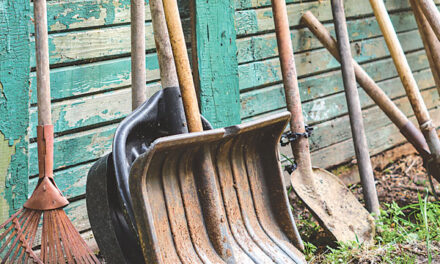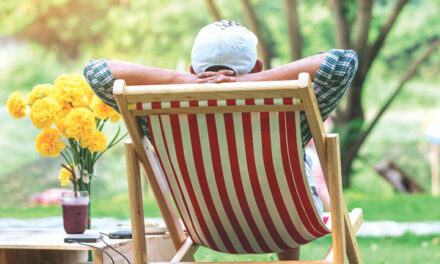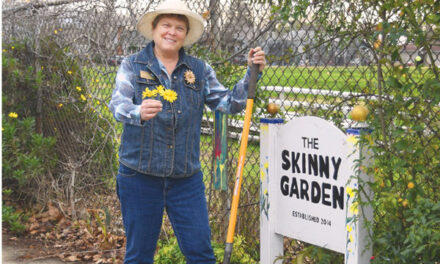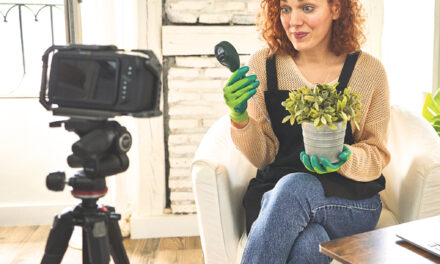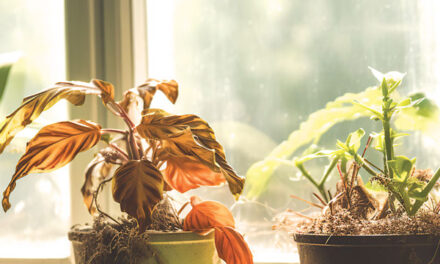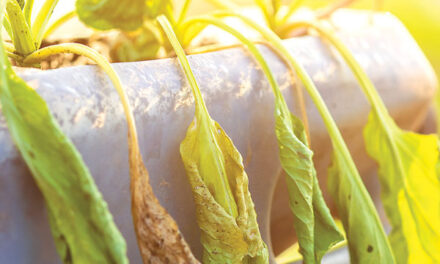A self-described “bratty teenager,” Lori Ann Asmus saved her best attitude for houseplants.
“My mom was an avid gardener, but I really wasn’t interested in working with her,” Asmus says. “I would buy these little indoor plants and then kill them in short order by being uber-responsible, watering them every day, sometimes twice a day. I didn’t have success with houseplants until I went to college, where I didn’t have time to love them to death.”
All grown up, Asmus owns The Emerald City Interior Landscape Services. Chances are you have gazed upon her “interiorscapes” in Sacramento businesses such as The Citizen Hotel, Eskaton Village, and lobbyist, attorney and doctor offices. She designs and maintains indoor plants for mostly business clients
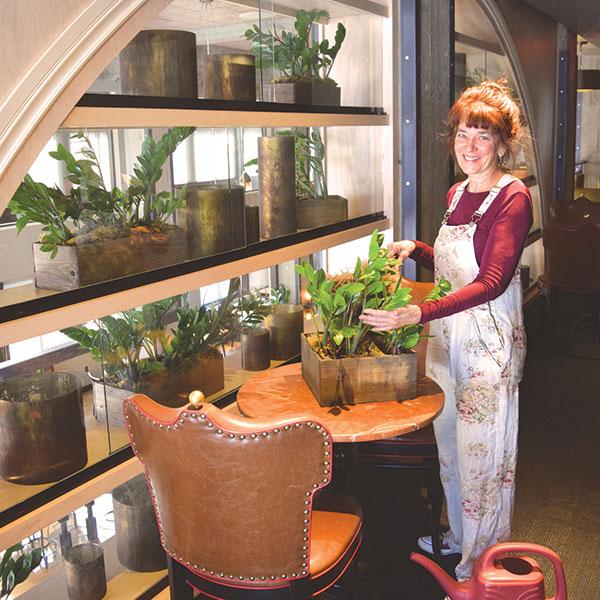
Houseplants, yoga pants and food delivery all found a welcome embrace from the pandemic’s work-at-home folks. Millennials, born 1981–1996, and Generation Z, born 1997–2012, have showered love on houseplants. They post indoor gardens on social media platforms. As they delay marriage, children and home buying, they become doting plant parents.
All ages can appreciate the benefits of houseplants. Studies find indoor plants improve air quality, moods and productivity, and inject style and nature into living spaces.
When Asmus was a UC Davis student and working in the botany department’s work-study program, her passion for houseplants reached a fever pitch.
“It kind of crept up on me,” she says. “There were lots of fascinating indoor plants in the greenhouses. My friends would complain about moving me from apartment to apartment because plants took up more room than all the other things I owned.”
She honed her plant skills in college and at her mother’s plant shop in Southern California. Working as a server in a Davis restaurant, she voluntarily tended the dining room plants swinging in macrame hangers.
“One day, the manager pulled me into his office and explained that people actually make money taking care of plants. It was a revelation and the beginning of a new business I started while still in college. My first real account was Togo’s in Davis.”
Confined mostly indoors during winter months, houseplants become our focus. Mostly tropical or subtropical, houseplants do not tolerate temperature extremes. Blooming plants are especially sensitive.
“They generally are comfortable where we are comfortable,” Asmus says.
She recommends buying and transporting houseplants during mid-day hours in winter when temperatures are warmer.
“Cold can cause as much distress as heat in summer. Do your errands first, saving plant purchases for last. Don’t put them in the trunk!”
Most houseplants perform best when situated in an unobstructed eastern or southern exposure.
“West exposure will be best for plants that can tolerate high light, such as ficus, asparagus fern and lipstick plant. North-facing windows are suitable for low-light tolerant plants like Chinese evergreen, sansevieria and some dracaenas. Plants will tell you they are not receiving enough light with smaller leaves and a washed-out look.”
Over-watering, followed by under-watering, kills most houseplants. Roots need air and water. Asmus says to water thoroughly until water flows out the drain holes. If plants sit in water, the roots can rot in as little as 72 hours.
When to water is more complicated. Pick a day of the week to check if plants need water, she advises. She pokes a finger into the soil. If it’s dry to the second knuckle, water. Moisture meters and lifting the pot (if it’s especially heavy, do not water) are other options.
Use a complete fertilizer with low macronutrient numbers for nitrogen-phosphorus-potassium (like a 2-3-1 on the label) and that includes micronutrients. Use only half the recommended dose and stop fertilizing houseplants between October and March.
“These strategies will keep the soluble salts from building up in the soil, which can cause other nutritional issues and root dieback,” she says. White, chalky build up on clay pots (and sometimes in soil) indicate soluble salts are gaining ground.
Asmus recommends these “bullet-proof” houseplants for beginners: Chinese evergreen, pothos, sansevieria, dracaena massangeana, spathiphyllum domino, schefflera amate, fishtail palm, ZZ plant (zamioculcas zamiifolia) and xanadu plant (thaumatophyllum xanadu).
Dan Vierria is a University of California Cooperative Extension Master Gardener for Sacramento County. He can be reached at masterg29@gmail.com. For answers to gardening questions, contact the UCCE Master Gardeners at (916) 876-5338, email mgsacramento@ucanr.edu or visit sacmg.ucanr.edu. Follow us on Facebook, Twitter and Instagram: @insidesacramento.




